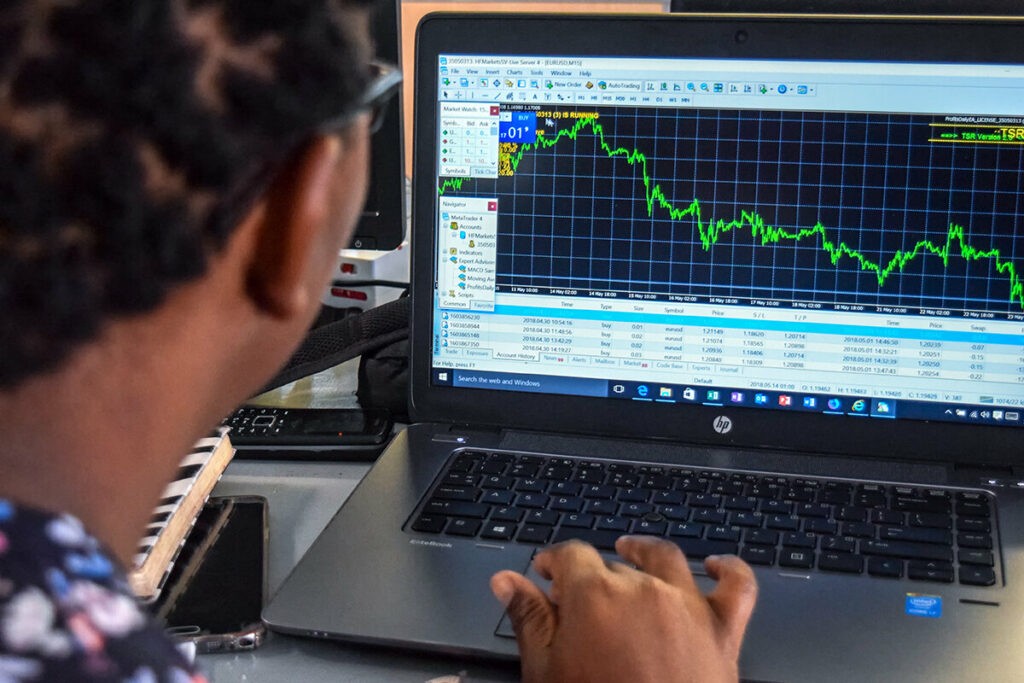Our Forex trading PDF explains that forex is widely considered to be one of the largest and most liquid asset markets in the world. Referred to as FX, currencies are traded 24 hours a day, 7 days a week.
The term ‘forex’ is a blend of ‘foreign exchange’ and ‘currency’. In simple terms, refers to the process of exchanging one currency to another – and generally speaking, this will be for tourism, commerce, trading and many other reasons.
In this forex trading PDF, we will talk about what forex trading is and some of the commonly used terminology in the industry. We will also explore the many different forex charts available, and we’ve thrown in some tips to help you become a better forex trader from the offset!
Best Forex Trading to start in 2025
3
Payment methods
Trading platforms
Regulated by
Support
Min.Deposit
Leverage max
Currency Pairs
Classification
Mobile App
Min.Deposit
$100
Spread min.
Variables pips
Leverage max
100
Currency Pairs
40
Trading platforms
Funding Methods





Regulated by
FCA
What you can trade
Forex
Indices
Actions
Cryptocurrencies
Raw Materials
Average spread
EUR/GBP
-
EUR/USD
-
EUR/JPY
0.3
EUR/CHF
0.2
GBP/USD
0.0
GBP/JPY
0.1
GBP/CHF
0.3
USD/JPY
-
USD/CHF
0.2
CHF/JPY
0.3
Additional Fee
Continuous rate
Variables
Conversión
Variables pips
Regulation
Yes
FCA
No
CYSEC
No
ASIC
No
CFTC
No
NFA
No
BAFIN
No
CMA
No
SCB
No
DFSA
No
CBFSAI
No
BVIFSC
No
FSCA
No
FSA
No
FFAJ
No
ADGM
No
FRSA
71% of retail investor accounts lose money when trading CFDs with this provider.
Min.Deposit
$100
Spread min.
- pips
Leverage max
400
Currency Pairs
50
Trading platforms
Funding Methods




Regulated by
CYSECASICCBFSAIBVIFSCFSCAFSAFFAJADGMFRSA
What you can trade
Forex
Indices
Actions
Cryptocurrencies
Raw Materials
Etfs
Average spread
EUR/GBP
1
EUR/USD
0.9
EUR/JPY
1
EUR/CHF
1
GBP/USD
1
GBP/JPY
1
GBP/CHF
1
USD/JPY
-
USD/CHF
1
CHF/JPY
1
Additional Fee
Continuous rate
-
Conversión
- pips
Regulation
No
FCA
Yes
CYSEC
Yes
ASIC
No
CFTC
No
NFA
No
BAFIN
No
CMA
No
SCB
No
DFSA
Yes
CBFSAI
Yes
BVIFSC
Yes
FSCA
Yes
FSA
Yes
FFAJ
Yes
ADGM
Yes
FRSA
71% of retail investor accounts lose money when trading CFDs with this provider.
Min.Deposit
$50
Spread min.
- pips
Leverage max
500
Currency Pairs
40
Trading platforms
Funding Methods




What you can trade
Forex
Indices
Actions
Raw Materials
Average spread
EUR/GBP
-
EUR/USD
-
EUR/JPY
-
EUR/CHF
-
GBP/USD
-
GBP/JPY
-
GBP/CHF
-
USD/JPY
-
USD/CHF
-
CHF/JPY
-
Additional Fee
Continuous rate
-
Conversión
- pips
Regulation
No
FCA
No
CYSEC
No
ASIC
No
CFTC
No
NFA
No
BAFIN
No
CMA
No
SCB
No
DFSA
No
CBFSAI
No
BVIFSC
No
FSCA
No
FSA
No
FFAJ
No
ADGM
No
FRSA
71% of retail investor accounts lose money when trading CFDs with this provider.
What is Forex Trading?
With an average of around 5 trillion dollars traded daily in the forex arena, it’s clear that this particular financial instrument is very popular with traders and investors the world over.
Essentially, it is the action of selling or buying foreign currencies. Of course, these are all used by banks, corporations and investors for a variety of reasons like profit, making a trade, exchanging foreign currencies and tourism.
One of the major benefits with forex trading is that after opening a position, traders are able to put in place an automatic stop loss as well as at profit levels (this closes the trade).
The forex market is a place to buy or sell against each other a variety of national currencies, globally. The currency will be changed from one currency to another, and currency pairs from all over the world are continuously trading 24/7.
Wherever two foreign currencies are being traded, you can be sure that a forex market exists regardless of the time zone.
Commonly used Trading Terminology
In this section of our forex trading PDF, we are going to run through some of the most commonly used forex trading terminologies in the industry.
Pips
Pip stands for ‘point in percentage’, and depicts any small changes noted in currency pairs within the forex market. The pip represents the smallest amount possible a currency quote can alter. For instance, 0.0001 of a price quote – when it comes to the price of a currency pair. This is referred to as the ‘base unit’ of the pair.
If the bid price for GBP/USD pair changes from 1.2590 to 1.2591, this illustrates the difference of one pip.
Spread
The differentiation between the sale price and the purchase price of a currency pair is known as the spread. The least popular (least commonly used) currency pairs usually have a low spread. In some cases, this can be even less than a pip.
When trading the most commonly used currency pairs the spread is often at its lowest. The total value of the currency pair needs to surpass the spread in order for the forex trade to become profitable.
Learn 2 Trade Free Signals Service

- Get 3 Free Signals per Week
- No Payment or Card Details Needed
- Test the Effectiveness of our High-Level Signals
- Major, Minor, and Exotic Pairs Covered

Leverage
We couldn’t create a forex trading PDF without mentioning leverage. In order for forex brokers to increase the number of trades available to its customers, they need to provide capital in the way of leverage.
Before you can trade using leverage, you must sign up to a forex broker and open a margin account. Contingent on the broker and the size of the position, leverage is usually capped at 1:30 if you are a retail client (non-professional trader). Some offshore forex brokers will offer much more than this if you are seeking higher limits.
Here are a few examples for a better idea of leverage:
- Let’s say that you are trading EUR/GBP which is priced at 1.1700.
- Then, you think the price will increase you you enter a buy position.
- Plus, you only have £500 in your forex trading account.
- You want to trade with more, so you apply the leverage of 20x.
- The value of EUR/GBP increase by 2%.
- On a standard stake of £500, you would have made a £10 profit.
- But, as you applied leverage of 20x, this increased to £200.
However, if the value of the pair went down by 2%, you would lose £200.
It is because of the aforementioned example that you should exercise caution when using leverage. Should the worst possible scenario happen and your account falls below 0, you should contact your forex broker and ask for its policy on negative balance protection.
The good news is that all forex brokers which are regulated by ESMA (the European Securities and Markets Authority) will be able to provide you with this extra level of protection, ensuring that you never become in debt with your broker. It’s like a stopper which prevents you from dropping below 0.
Our Forex Signals
1 - month
Subscription
 Up to 15 signals daily
Up to 15 signals daily 76% success rate
76% success rate Entry, take profit & stop loss
Entry, take profit & stop loss Amount to risk per trade
Amount to risk per trade Risk reward ratio
Risk reward ratiomonth
3 - month
Subscription
 Up to 15 signals daily
Up to 15 signals daily 76% success rate
76% success rate Entry, take profit & stop loss
Entry, take profit & stop loss Amount to risk per trade
Amount to risk per trade Risk reward ratio
Risk reward ratiomonth
 Most popular
Most popular
6 - month
Subscription
 Up to 15 signals daily
Up to 15 signals daily 76% success rate
76% success rate Entry, take profit & stop loss
Entry, take profit & stop loss Amount to risk per trade
Amount to risk per trade Risk reward ratio
Risk reward ratiomonth
Lifetime
Subscription
 Up to 15 signals daily
Up to 15 signals daily 76% success rate
76% success rate Entry, take profit & stop loss
Entry, take profit & stop loss Amount to risk per trade
Amount to risk per trade Risk reward ratio
Risk reward ratioSeparate Swing Trading Group
 Up to 3 signals weekly
Up to 3 signals weekly 76% success rate
76% success rate Entry, take profit & stop loss
Entry, take profit & stop loss Amount to risk per trade
Amount to risk per trade Risk reward ratio
Risk reward ratiomonth
1 - month
Subscription
 Up to 15 signals daily
Up to 15 signals daily 76% success rate
76% success rate Entry, take profit & stop loss
Entry, take profit & stop loss Amount to risk per trade
Amount to risk per trade Risk reward ratio
Risk reward ratiotime
Margin
Margins are a good way for traders to build up their exposure. Put simply, in order for a trader to maintain position and place a trade, the trader needs to put forward a specific amount of money first – this is the margin. Rather than being a transaction cost, the margin can be compared to a security deposit. This will be held by the broker during an open forex trade.
It is commonplace for forex brokers to give their customers access to leverage (see above). This is because generally speaking, the retail forex trader doesn’t have enough of a margin so that they can trade in high volumes (well, high enough to make a decent enough profit).
Hedging
In order for you to lower your risk of exposure and offset your balance, you might consider hedging. This is a procedure which involves traders selling and buying financial instruments. When there are movements in currencies, a hedging strategy can reduce the risk of disadvantageous price shifts. The protection of this technique is often a short term solution.
Traders often turn to hedge in a panic as a result of the financial media reporting volatility in currency markets. This is usually down to huge events like geopolitical turmoil (conflict in the middle east), global health crisis (COVID-19) and of course the great financial crisis of 2008.
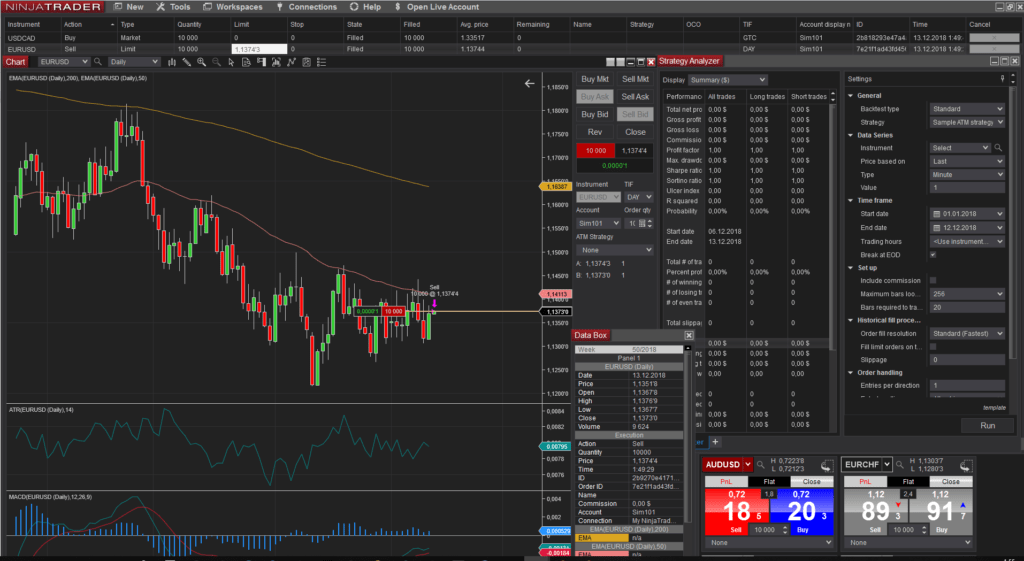
A hedging strategy example would be:
- As a concerned investor, you open a contrasting position on trade.
- To further explain, let us say you have a long position on GBP/USD.
- You might decide to open a short position on GBP/GEURBP as well.
- This is also commonly referred to as a direct hedge.
While it can take some time to get your head around heading in the forex markets, the overarching concept is that it presents both outcomes. That is to say, irrespective of which way the markets move, you will remain at the break-even point (less some trading commissions).
Spot Forex
The exchange rate of two currencies is often referred to as a ‘spot’ exchange rate. More specifically, the spot trade is a spot transaction, with reference to the sale or the purchase of a currency. Essentially, spot forex is to both sell and buy foreign currencies.
A good example of this is if you were to purchase a certain amount of South African rands (ZAR), and exchange that for US dollars (USD).
If the value of the ZAR increases, you are able to exchange your USD back to ZAR, meaning you get more money back in comparison to the amount you originally paid.
Contract for Difference (CFD)
CFD is basically a contract which portrays the price movement of financial instruments. So, without having to own the asset, you can still make the most of price movements, whilst also avoiding the need to sell or buy vast amounts of currency.
CFDs are also accessible in bonds, commodities, cryptocurrencies, stocks, indices and of course – forex. With a CFD you are able to trade in price movements, cutting out the need to buy them at all.
Different Forex Charts
This section of our forex trading PDF is all about forex charts. When it comes to a MetaTrader platform, traders can use bar charts, line charts and candlestick charts. You can usually toggle between the different charts, depending on your preferences, fairly easily.
Below we’ve put together an explanation of each type of chart for you.
Candlestick Chart
The first record of the now-famous candlestick chart was used in Japan during the 1700s and proved invaluable for rice traders. These days, this price chart is without a doubt one the most popular amongst traders all over the world.
Much like the OHLC bar chart (see below), candlestick charts provide low, high, open and close values for a predetermined time frame. Live forex traders love this chart due to its visual appearance and the range of price action patterns utilised.
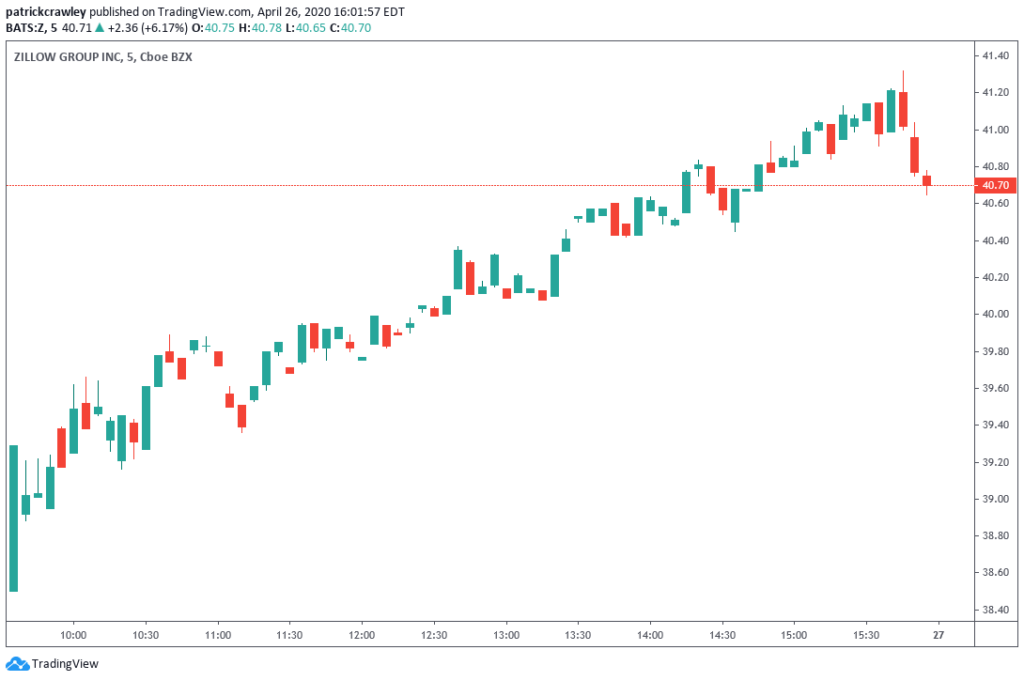
OHLC Bar Chart
Standing for ‘Open, High, Low, Close’, the OHLC chart is great for portraying any movement in the price of an asset, done over a specific time (for example – one hour, or a trading day).
As the title suggests, this one is a bar chart, and each time frame a trader is looking at will be displayed as a bar. In other words, if you are viewing a daily chart you will see that every bar equates to a full trading day.

- The highest market price traded within the selected timeframe will be represented by the high of the bar.
- The lowest market price traded within the selected time frame is represented by the low of the bar.
- The dash on the right will represent the closing price, and the dash on the left will be the opening price.
- The red bars are also called seller bars; this is due to the fact the closing price is less than the opening price.
- The green bars are also referred to as buyer bars; opposite to above. This is because the opening price is lower than the closing price.
With this price chart, traders are able to establish who is controlling the market, whether it be sellers or buyers.
OHLC analysis was the starting block for the creation of the ever-popular candlestick charts (please further down).
Line Chart
This chart is considered to be the most elementary type of price chart, but that doesn’t mean it’s not useful. It is a great tool for looking at the bigger picture when it comes to trends.
It does depend on what time frame you are viewing (this can be anything from minutes to months), but for argument’s sake let’s say you are using a daily chart. The line chart arranges the close prices at the end of that time frame; so in this case, at the end of the day, the line will connect the closing price of that day.
Forex – How to Trade
In this section of our forex trading PDF, we are going to talk about the different ways in which you can sell and buy a forex position as well as things to look out for.
Pricing and Quotes
When it comes to forex trading you will see both ‘bid’ and ‘ask’ prices:
- Bid price: This is the price you can sell currency at.
- Ask price: This is the price you are able to buy currency at
When it comes to forex trading you can trade both short and long, but always make sure you have a good understanding of forex trading before embarking on trades. After all, forex trading can be a bit complex to begin with, especially when mixing long and short trades.
Long Trade (Buy)
In a nutshell, going long is usually a term used for buying. So, when traders expect the price of an asset to rise, they will go long.
As an example of a long position:
- Say you’ve held a long position in the primary instrument purchased.
- For example, USD/JPY.
- This means that you are anticipating that the USD is going to increase in value against the JPY.
- If you invest £1,000 into USD/JPY through a long position, then you simply £1,000 staked that the pair will increase in value.
Short Trade (Sell)
When forex traders expect the price of an asset to fall, they will go short. This means benefiting from buying at a lesser value. To achieve this, you simply need to place a sell order.
Current Prices and Demand
The current exchange rate of a forex pair is always based on market forces. This will change on a second-by-second basis. As we noted earlier, you also need to take the spread into account, so there will always be a slight variation in pricing.
For instance, if you exchange 1 USD for 17 ZAR, the sale and purchase price offered by your forex broker will be either side of that figure. The currency pairs with the most notable supply and demand attached to them will be considered the most liquid in the forex market. The supply and demand aspect is thanks to the investment of importers, exporters, banks and traders – to name a few. This is how the forex arena is home to over $5 trillion worth of buy and sell positions each and every day!
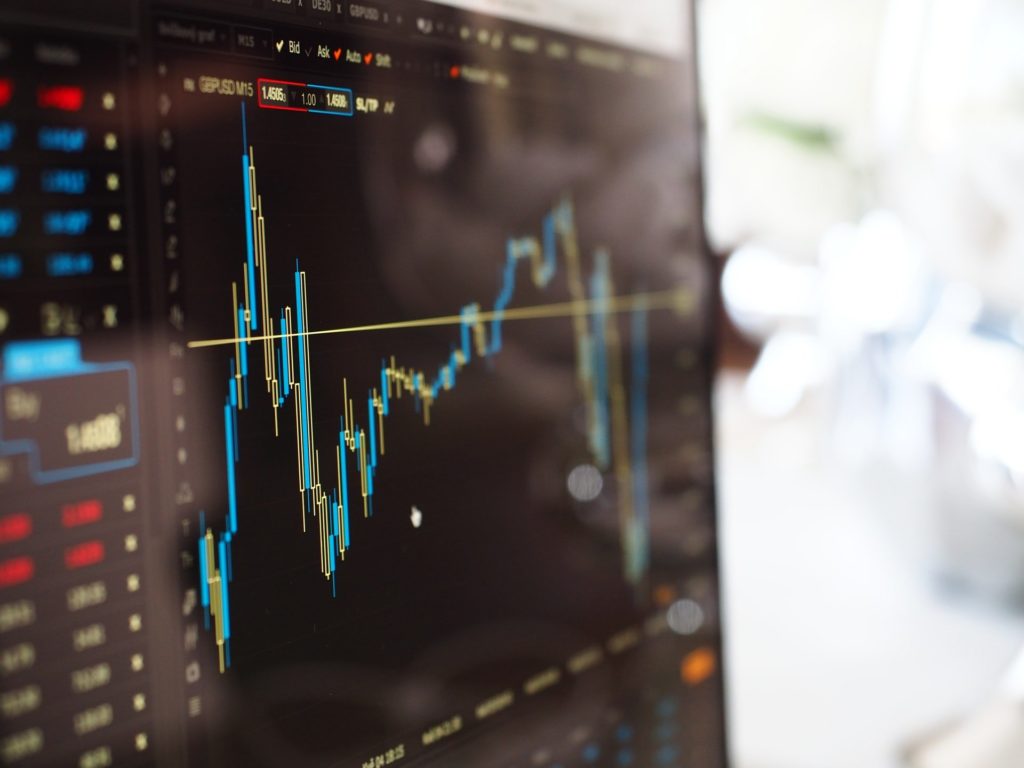
Forex Trading System to Consider
When you feel you are ready to take the plunge and begin live trading, you need to select a forex trading system. There is a vast amount of trading strategies for you to pick from. This is because investors, speculators, corporations and banks have been trading for decades.
In this part of the forex trading PDF, we are going to explain a few of the strategies available to you.
- Intraday Trade: Concentrating on 1-hour or 4-hour price trends, forex intraday trading is considered more of a conservative way of trading. Focusing on the leading sessions for each individual market, these trades remain open for anywhere between 1 and 4 hours. As such, this could make it a suitable option for beginners.
- Currency Scalping: This particular strategy is often viewed as a low-risk form of trading. It is focused on selling and buying currency pairs within an extremely short time frame. This is usually anywhere between a matter of seconds, and 2 to 3 hours at the most. This strategy makes it very practical to potentially gain a number of smaller profits, with the hope of creating a stockpile of profits.
- Swing Trading: Often referred to as a medium-term approach, unlike scalping and intraday, swing trading concentrates on bigger price movements. With this strategy, traders are able to leave their trade open for days or even weeks. Some traders like to use this option in order to embellish existing daily trades.
Trading Platforms – Explained
If you want to buy and sell currency pairs from the comfort of your home (or even via your mobile device), you will need to use a trading platform. Otherwise referred to as a forex broker, there are literally hundreds of trading platforms active in the online space. This makes it extremely difficult to know which broker to sign up with.
In the below sections of our forex trading PDF, we explain some of the considerations that you need to make.
Analysis Tools and Features
You should also look out for analysis tools available to you. In some cases, this might be embedded, while some offer tools such as technical analysis and fundamental analysis. There’s no doubt that having access to a range of technical indicators, live price charts, and current news and data from the financial market is an essential part of forex trading.
However, if you can access these technical indicators within your trading platform, it’s going to prove to be very useful. This is because it will save you a lot of leg work having to move between different sites and sources of information.
Some of the fastest and easiest trading platforms are MetaTrader 5 (MT5) and MetaTrader 4 (MT4). Whilst MT4 was created especially for forex traders, MT5 gives traders access to CFDs (For CFDs, please see explanation under ‘Commonly used Trading Terminology’ in this forex trading PDF).
Crucially, both MT4 and MT5 are fast and receptive trading platforms, both providing live market data and access to sophisticated charts.
Confidence in Your Forex Broker
It is essential before you begin trading seriously that you fully trust the trading platform you intend on using. This is especially the case if you intend on using a scalping strategy, for example.
However, if you like to trade, it is vital for your peace of mind and your finances that you are fully confident with the fast execution of data transfer. This is also the case with the precision of quoted prices, and the speed of order processing. All of these things are going to help you to have a successful forex trading experience.
To enable you to make the most of new opportunities, the ideal forex broker will be available to you 24 hours a day and 7 days a week, in line with the forex market opening hours.
Independent Account Manager
To save you from having to request that your broker takes action for you, your forex broker should enable you to manage your account and your trades separately.
By doing this, you will be in a much better position to quickly react to any shifts in the market, and hopefully, make the most of potential opportunities. This will enable you to gain better control over any open positions as and when they arise.
Safety and Security
It is important to ensure that your forex broker of choice is a reputable company, who will ensure that your personal information and trading funds are fully protected and backed up.
Segregation is frequently used amongst forex brokers as a way to separate your funds from the funds of the company (i.e. their daily costs, debts and running costs). So, no matter what happens to the forex broker, your money is safe and segregated.
If you find that a forex broker is unable to do this, we would suggest you find a better broker as it is standard practice these days. All of the brokers listed towards the end of this forex trading PDF are regulated by at least one reputable licensing body.
Forex Trading – Getting Started
In terms of getting set up as an online forex trader, the steps remain constant regardless of which broker you decide to join. Below we list some of the steps that you will need to take.
Step 1: Open an Account
In order to open an account, you will need to enter some personal information. Standard details requested by the broker will be things like your name, residential address, and contact details.
Some brokers will also require your tax status and will ask you to provide more financial details such as employment status, net worth and any regular income.
Step 2: Trading Experience
Forex brokers will often want to ensure you have some level of trading experience (however this isn’t always the case). In this instance, you will usually need to answer some multiple-choice questions based on your experience. This is usually a fairly simple process.
Step 3: Verifying your Identity
Known as KYC in the industry (Know Your Customer), this simply means that the forex broker is going to need you to prove who you are. Some brokers will verify this using scanned copies of documentation. This is typically a government-issued ID (passport or driver’s license) and a proof of address (utility bill or bank account statement).
Step 4: Depositing Funds
Now you need to select your payment method of choice (usually from a drop-down list). Bear in mind that how long this takes to go into your trading account will largely depend on the payment method – so always check this before parting with your cash.
Supported payment methods typically include a debit/credit card or bank account. Some brokers even support e-wallets like PayPal and Skrill.
Step 5: Begin Trading
After reading our forex trading PDF you should now be feeling confident enough to begin trading. However, we do recommend that you always try out a free forex trading demo first. This will allow you to test out your newly formed trading strategies before risking your own capital.
Forex Trading Strategies
In the next section of our forex trading PDF, we explore some of the more important technical indicators and market insights used by seasoned traders.
Donchian Channels
First invented by Richard Donchian, the donchian channels can be adapted as you like, in terms of parameters. Should you choose to view a 30-day breakdown, for example, the indicator will be created by taking the lowest low, and the highest high of that period (so in this example 30 periods).
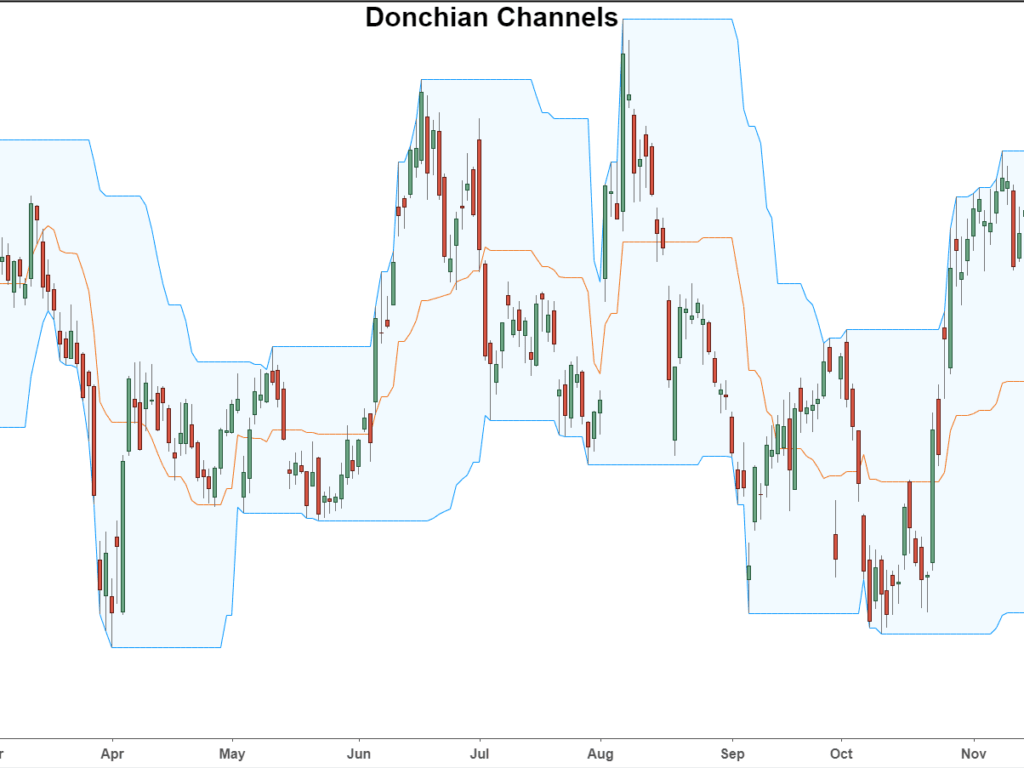
With this in mind, you should think about opening one of the following two positions:
- Long – If the last 300-day moving average is lower than the 25-day moving average.
- Short – If the last 300-day moving average is greater than the 25-day moving average.
You will need to sell your pair in order to exit your trade if you open a long position (and visa-versa).
Simple Moving Average
This is another commonly used forex indicator. The simple moving average (aka SMA) operates at a slower rate than the present market price (known as a lagging indicator). Furthermore, it uses a lot of historical price data. In fact, more so than most other strategies.
A good indication that the latest price is higher than the older price is when the long-term moving average is below the short-term moving average. This could be considered a buy signal due to an upward trend in the market.
In the opposite scenario when the long-term moving average is higher than the short-term moving average, this of course points towards a sell signal due to a downward trend. Moving averages are usually used as evidence of an overall trend, rather than purely forex trading signals.
This means you can blend both strategies in order to ditch breakout signals which don’t match up to the general trend the moving averages suggests. Of course, this is a great way to make your breakout signals much more productive. If you are alerted to a sell signal, this indicates that the short-term moving average is below that of the long-term moving average, so you might want to place a sell order.
However, if you are given a signal to buy, this usually means that the short-term moving average is higher than that of the long-term moving average.
Breakout
Using breaks as trading signals, the breakout is considered a long-term strategy. Commonly referred to as ‘consolidation’, markets sometimes alternate between resistance and support bands. The breakout itself occurs when the market goes further than these consolidation limits – whether that be lower or higher. As such, a breakout must take place whenever a new trend occurs.
By looking at breaks, you will have a good indication of whether or not a new trend has begun. With that said, this doesn’t mean that a breakout is 100% accurate in signalling a new trend. In this case, you might want to use a stop-loss order to give you a better chance of avoiding a substantial loss.
Forex Trading: Possible Risks
As glamorous as a career in forex trading might sound, there are a number of risks that you need to take into account. In the below sections of our forex trading PDF, we explore these possible risks in more detail.
Transactions
The transaction risk is in relation to the exchange rate and any time zone differences. This means there is a chance that at some point between the beginning and end of a contract that the exchange rates could be subject to change. The risk of this happening elevates with the more time that passes between entering a contract and settling the same contract.
Interest Rates
The risk here is that if a country’s interest rate falls, the currency of that country will probably be weaker. This generally leads to investors withdrawing investments, and as a result, your return will be lower.
The good news is that when a currency rate is on the rise, chances are that the respective currency will be stronger. When this does happen, your returns could be higher. This is because seasoned investors like to gain exposure to stronger currencies.
Leverage Risk
The higher your leverage is, the higher your losses or benefits will be. Of course, this means leverage can affect your trading in a positive or negative way – depending on which way it goes.
Best Forex Trading Brokers of 2025
The final part of our forex trading PDF is to explore which brokers are popular with both newbie and seasoned traders. Each of the forex trading platforms listed below has been pre-vetted, meaning that you can be confident they tick most boxed.
This means that each platform is regulated, offers heaps of forex pairs, has low commissions and fees, and supports several payment methods.
1. AVATrade – 2 x $200 Welcome Bonuses
AvaTrade is an established broker that offers thousands of financial instruments. On top of stocks, indices, commodities, and cryptocurrencies (all via CFDs), you can also trade heaps of forex pairs. There are no trading commissions to pay, and spreads are very competitive.
You can either trade via the AvaTrade web-platform, or via popular third-party provider MT4. Minimum deposits stat at $100, which you can facilitate with a debit/credit card or bank account. The platform is heavily regulated, with several licenses under its belt.

- 20% welcome bonus of up to $10,000
- Minimum deposit $100
- Verify your account before the bonus is credited
2. VantageFX – Ultra-Low Spreads
VantageFX VFSC under Section 4 of the Financial Dealers Licensing Act that offers heaps of financial instruments. All in the form of CFDs - this covers shares, indices, and commodities.
Open and trade on a Vantage RAW ECN account to get some of the lowest spreads in the business. Trade on institutional-grade liquidity that is obtained directly from some of the top institutions in the world without any markup being added at our end. No longer the exclusive province of hedge funds, everyone now has access to this liquidity and tight spreads for as little as $0.
Some of the lowest spreads in the market may be found if you decide to open and trade on a Vantage RAW ECN account. Trade using institutional-grade liquidity that is sourced directly from some of the top institutions in the world with zero markup added. This level of liquidity and availability of thin spreads down to zero are no longer the exclusive purview of hedge funds.
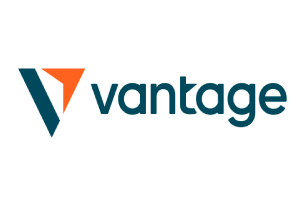
- The Lowest Trading Costs
- Minimum deposit $50
- Leverage up to 500:1
To Conclude
Having made it this far through our forex trading PDF, you should by now have an understanding of how technical analysis works, and have a good grasp of the macroeconomic fundamentals which guide currency values. Armed with all of the useful information included in this guide, you should be ready to get out there and start trading forex. Hopefully, making a profit and learning more along the way.
If you are a trader with somewhat limited funds, you might find that swing trading suits you best. If you have a larger trading fund available to you, you might have a more profitable experience with fundamental based trading. Either way, we do recommend trying out a free demo account where possible before trading with your hard-earned money. As well as reading helpful guides like ours, actually learning by doing will also provide you with a better sense of how it all works and how you might like to trade yourself.
Learn 2 Trade Free Signals Service

- Get 3 Free Signals per Week
- No Payment or Card Details Needed
- Test the Effectiveness of our High-Level Signals
- Major, Minor, and Exotic Pairs Covered

FAQ
What does forex mean?
How do you make money in forex?
What is the spread in forex?
What is a good spread in forex trading?
What is the pip in forex?
What leverage limits are in place when trading forex?
What is slippage in forex?
Read more related Articles:
Forex Trading for Beginners: How to Trade Forex and Find the Best Platform 2025


